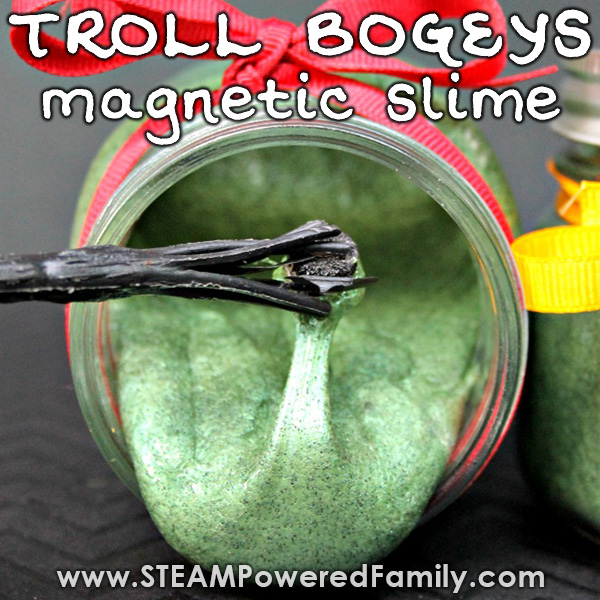Magnet Experiments for Kids
Did you know that one of the great inspirations for Albert Einstein’s curiosity as a child was his discovery of the magnetic forces that control a compass? Today we want to embrace our own passion for learning and discovery, and foster that all important curiosity, as we explore magnet experiments and science.
Magnet Science for Kids
Disclaimer: This article may contain commission or affiliate links. As an Amazon Influencer I earn from qualifying purchases.
Not seeing our videos? Turn off any adblockers to ensure our video feed can be seen. Or visit our YouTube channel to see if the video has been uploaded there. We are slowly uploading our archives. Thanks!
Why did the magnet go to school?
Because it wanted to attract some knowledge!
What is Magnetism? What are Magnets?
Magnets are really cool objects that have a special power called magnetism. It allows them to stick to certain things and even make things move without touching them!
A magnet is usually made of a material called iron. Iron has special properties that make it magnetic. A magnet has two ends called poles. One end is called the North pole, and the other is called the South pole… just like the Earth!
When you bring two magnets close together, something interesting happens. If you try to put the North pole of one magnet close to the North pole of another magnet, they push each other away. Another way to say this is that they repel each other, known as repulsion. But if you put the North pole of one magnet close to the South pole of another magnet, they pull towards each other and stick together, this is called attraction.
Magnets can also stick to certain things like metal objects. This is because there are tiny invisible things called electrons inside those objects. When a magnet gets close to a metal object, it can make the electrons inside the object move a little bit. This makes the metal object act like a magnet allowing them to attract.
You can find magnets in lots of places. You might have magnets on your fridge that hold up your artwork or pictures. Magnets are also used in some toys. Our favourite magnet toy is Magna Tiles!
Quick Fun Magnet Game: Grab a magnet wand and have your kids run around home or the classroom and look for magnetic items. How many different objects can they find that have magnetic properties?
Magnets are special objects that can stick to certain things, attract and repel each other, and even make things move. They’re like a magical force that can do some really cool things!
What is Earth’s Magnetic Field?
Did you know Earth is a big magnet? Just like a regular magnet, Earth also has a magnetic field. This magnetic force is invisible, but it’s all around us. Think of it like a big bubble that covers Earth. It stretches from deep inside our planet and goes all the way up into space.
You know how magnets have a north pole and a south pole? Well, Earth’s magnetic field is just like that. It has a north pole and a south pole too.
The magnetic field is important because it protects us from some harmful things in space. The Sun sends out lots of things called solar winds, which are like a stream of particles. These solar winds carry electrically charged particles called cosmic radiation, and if they reached Earth’s surface, they could be dangerous. You can see incredible displays of our protective bubble at work when you look at the Northern Lights.
Thanks to the magnetic field, it acts like a shield and stops most of these particles from coming down to Earth. It keeps us safe by diverting those particles around our planet. It’s like wearing a strong armor that protects us from harm.
Not only does the magnetic field protect us, but it also helps animals like birds and turtles find their way during long journeys. Some of them have a special ability to sense the magnetic field, kind of like having a built-in compass.
Magnet Lesson Vocabulary Review
Magnet: A magnet is an object that has the ability to attract and repel. It has two ends called the north pole and the south pole. When two magnets come close together, opposite poles attract each other, while similar poles repel each other. Magnets can be either natural, like lodestone, or man-made, like the magnets on your refrigerator.
North Pole/South Pole: The ends of a magnet. Like attracts like, while opposites repel.
Magnetic: The definition of “magnetic” is something that has the properties or characteristics of a magnet. It can describe objects or materials that are capable of being attracted to or influenced by magnets. Magnetic materials, such as iron have the ability to be magnetized or interact with magnetic fields. Additionally, “magnetic” can be used to describe the behavior or effects associated with magnetism, such as magnetic forces or fields.
Attraction: When magnets attract, they want to stick together. Magnetic attraction is when like fields are brought together.
Repulsion: When magnets repel, they push each other away. This occurs when opposite fields, or different polarities, are brought close together.
Magnet Experiments
So now we have learned about magnets, let’s explore magnetism in science and do some experiments and projects. These are always great fun and students always find experiments with magnets really exciting. We love a project that gets kids excited to learn!
WARNING: Magnets are very dangerous if swallowed. Never, ever place magnets in your mouth, and don’t allow any young children to use magnets that can not do so safely. Small magnets in particular are very dangerous and easy to swallow. Strong magnets can also pinch fingers as they can attract strongly and suddenly. Always use caution and adult supervision.
Magnetic compass
Channel your inner Einstein and learn how to make a simple magnetic compass. This is a fun way to explore the magnetic forces by making your own compass.
Wingardium Leviosa
Is your kid waiting for their owl? Why not start with a charms class now and practice Wingardium Leviosa with this experiment that plays with paper clips and magnetic forces.
Flying Ghosts is a spooky twist on the Wingardium Leviosa experiment.
Jitter Bugs
This is a wonderful project that allows students to really play with magnetic forces as they try to get perpetual motion as their bugs jitter and dance around thanks to magnet science! It is also a wonderful STEM project where students can build their STEM mastery in Engineering and Math.
We love our lady bugs so much, we also decided to make a Spider magnetic science STEM Project, with the spider that dances and swings on a web.
Make It Move
This is a fun challenge for kids called Make it Move, that includes a magnetism component. The goal is to figure out how to move toy cars down a track without touching them. One option is to use magnets!
Magnetic Painting
Another idea like Make it Move is to put little pile of paint (do a few piles of different colours for extra fun!) on a paper plate or sheet of cardstock. Then place a magnet on top of the plate between the paint. Using a magnet wand, move the top magnet through the paint to create a special piece of art. Another version is magnet marble painting.
Troll Bogey’s Magnetic Slime
We love to have fun with our science around here, and in this project we couldn’t make a normal magnetic slime, nope, we turned ours into a Harry Potter inspired project with Troll Bogey magnetic slime! So grossly awesome!
Simple Magnet Experiment
One of the best ways to learn about magnets is to explore with them! We mentioned earlier a great game where you give kids a magnet wand and send them around to find all the things they can that are magnetic.
Another simple project is to gather some metal filings and place them in a bottle. Using a magnet or magnet wand, drag it around the outside of the bottle and see what happens to the filings. Now what happens if you try using two magnets? For an extra twist try adding some water to the bottle and see what happens when you put the magnet on the outside of the bottle. If you have a magnet that fits inside a straw, try sliding the magnet into the straw then into the bottle. What happens?
More magnet activity ideas from some of our STEM friends!
Build an Electromagnet – Frugal Fun for Boys and Girls
Magnetic Magic – Spinning Pen – Frugal Fun for Boys and Girls
Magnetic Train – Frugal Fun for Boys and Girls
Magnet Maze – Pacman Game – Frugal Fun for Boys and Girls
Magnet Pendulum – Teach Beside Me
Bouncing Magnets – Babble Dabble Do
Magnetic Sculptures – Babble Dabble Do
Heavy Metal Art with magnets and iron filings – Babble Dabble Do











